| Availability: | |
|---|---|
| Quantity: | |
| Applicable Industries | Hotels, Garment Shops, Building Material Shops, Machinery Repair Shops, Manufacturing Plant, Food & Beverage Factory, Farms, Restaurant, Home Use, Retail, Food Shop, Printing Shops, Construction works , Energy & Mining, Food & Beverage Shops, Other, Advertising Company |
| Power | Optional |
| Warranty | 1 Year |
| Width or Diameter | Size customization |
| Showroom Location | Canada, United States, Italy, Pakistan, India, Mexico, Thailand, Argentina, Colombia, Malaysia |
| Condition | New |
| Structure | Conveyor belt |
| Place of Origin | shenzhen.China |
| Machinery Test Report | Provided |
| Video outgoing-inspection | Provided |
| Marketing Type | New product 2024 |
| Warranty of core components | 1 Year |
| Core Components | Pin, Locker, Belt |
| Weight (KG) | 1 kg |
| Material | Plastic |
| Material Feature | Stable |
| Brand Name | CSTRANS |
| Voltage | 110V 220V 240V |
| Dimension(L*W*H) | Size customization |
| Material | PP.PE.PA,POM |
| Structure | Belt conveyor |
| Brand Name: | UniBelt |
| Pitch | customized |
| color | white. gray. nature. |
| Temperature | POM:-34℃ to 87℃ PP:+1℃ to 94℃ |
| Packaging Details | Packaging Details:Carton or wooden |
| Supply Ability | 2108 Meter/Meters per Month |
| Quantity (meters) | > 744 |
| Lead time (days) | 12 |
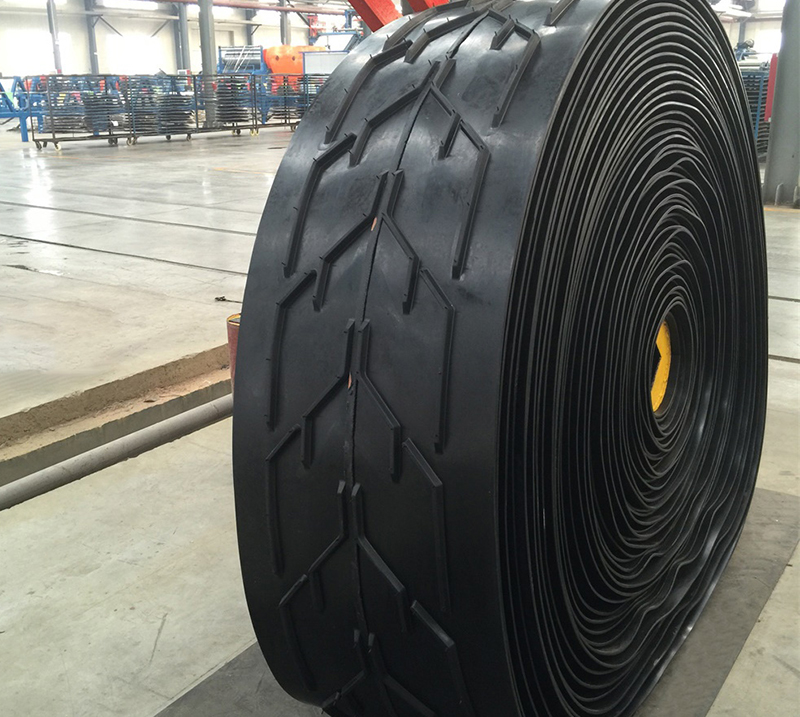
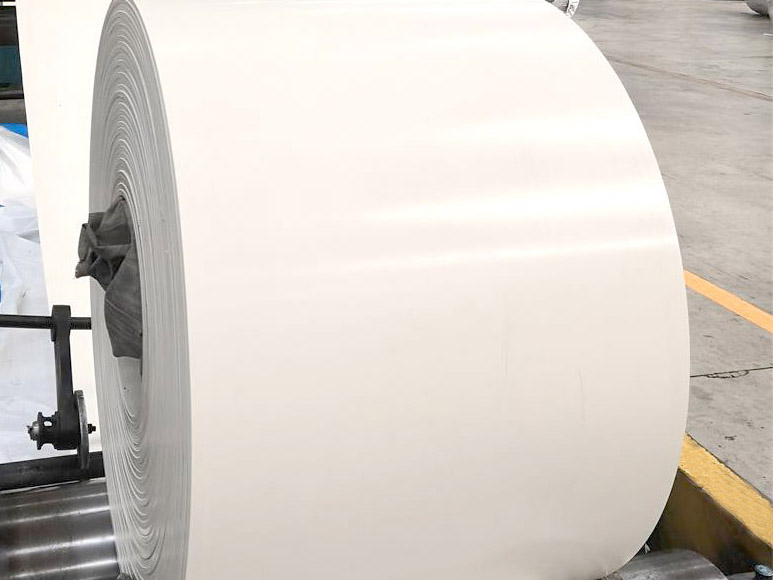
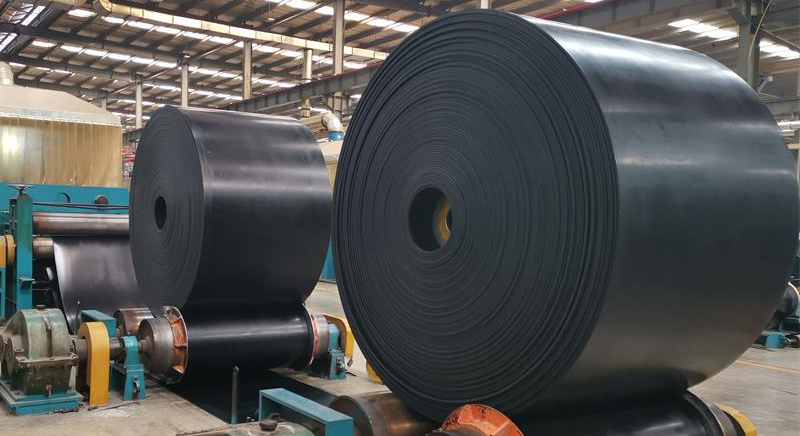
1.Can belt conveyor be used for transportation in warehouses?
Yes, conveyor belts are commonly used for transportation in warehouses. They are efficient and cost-effective for moving goods and materials from one location to another within a warehouse. Conveyor belts can be customized to fit the specific needs of a warehouse, such as size, speed, and type of material being transported. They can also be integrated with other warehouse equipment, such as forklifts and automated storage and retrieval systems, to create a seamless and efficient workflow.
2.How are products loaded and unloaded on a belt conveyor?
We are a new belt conveyor manufacturer.
Products are typically loaded onto a conveyor belt using one of the following methods:
Conveyor belts are widely used in various industries to efficiently transport products from one location to another. The loading and unloading process on a conveyor belt typically involves a few steps. Firstly, products are placed onto the conveyor belt by a worker or through an automated system. The belt then moves the products along its path, usually with the help of rollers or a pulley system. As the products reach their destination, they are either manually or automatically removed from the conveyor belt. This can be done by a worker who takes the products off the belt, or by using specialized equipment such as robotic arms. In some cases, the conveyor belt may also have a mechanism to flip or rotate the products to ensure they are in the correct orientation for the next step in the production or distribution process. Once unloaded, the conveyor belt continues to move, ready to receive the next batch of products for loading. This efficient and streamlined process allows for a continuous flow of products, increasing productivity and reducing labor costs.
3.What safety precautions should be followed while working with belt conveyor?
belt conveyor is not a product only, but also can help you comes to money-making.
When working with conveyor belts, it is important to follow certain safety precautions to ensure the safety of yourself and those around you. First and foremost, always wear the proper personal protective equipment, such as gloves and safety glasses, to protect against potential hazards. It is also important to regularly inspect the conveyor belt for any signs of wear and tear, and address any issues immediately. When operating the conveyor belt, make sure to follow proper lockout/tagout procedures to prevent accidental start up. When loading or unloading materials onto the conveyor belt, be aware of your surroundings and stand clear from any moving parts. Additionally, be cautious of any potential pinch points and keep hands and clothing clear from them. Lastly, always be familiar with the emergency shut-off procedures and have an emergency plan in place in case of any accidents. By following these safety precautions, you can ensure a safe working environment when working with conveyor belts.
4.What are some important factors to consider when choosing a belt conveyor supplier?
When choosing a conveyor belt supplier, there are several important factors that should be considered. Firstly, the quality and durability of the conveyor belt should be top priorities. This includes the material used, its weight capacity, and its resistance to wear and tear. Secondly, the supplier's reputation and experience in the industry should be evaluated. A reliable supplier with a good track record will ensure efficient and timely delivery of products. Thirdly, the cost and availability of spare parts and maintenance services should also be taken into account. Additionally, the supplier's level of customer service and support should be assessed to ensure a smooth and satisfactory purchasing experience. Finally, the supplier's compliance with international standards and regulations should also be considered to ensure the safety and reliability of the conveyor belt. Ultimately, a thorough evaluation and consideration of these factors will lead to choosing a reputable and reliable conveyor belt supplier.
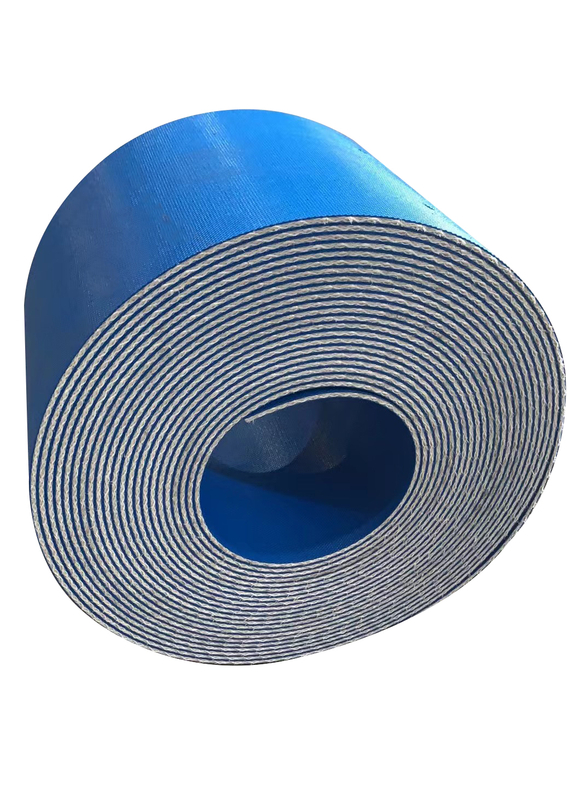
5.What are some potential hazards associated with working with belt conveyor?
Our belt conveyor products undergo strict quality control to ensure customer satisfaction.
Working with conveyor belts can pose potential hazards for employees if proper safety measures are not followed. Employees who are not properly trained on how to operate or use the equipment can face serious injuries. Some common hazards associated with conveyor belts include pinch points, entanglement, and falling objects. Pinch points can occur when an employee's body or clothing gets caught between the moving parts of the conveyor belt, which can lead to amputations or severe injuries. Entanglement can also occur if long hair, jewelry, or loose clothing get caught in the moving parts of the belt, causing serious injuries. Additionally, employees who are working near or under the conveyor belt are at risk of being hit by falling objects from the belt or items being transported. It is crucial for employers to provide proper safety training and enforce safety protocols to prevent these hazards and protect their employees.
6.How do you troubleshoot issues with belt conveyor tracking?
When troubleshooting issues with conveyor belt tracking, there are several steps you should follow. First, visually inspect the belt to check for any visible damage or misalignment. Next, make sure the tracking idlers are properly adjusted and any worn or damaged parts are replaced. Then, check the tension and alignment of the belt to ensure it is centered on the pulleys. Additionally, make sure the conveyor is on a level surface and that there are no obstructions or debris interfering with the tracking. Finally, test the belt by running it at a low speed and making any necessary adjustments until the tracking issue is resolved. Regular maintenance and monitoring can also help prevent future tracking issues.
7.What is the maximum weight that a belt conveyor can support?
We continue to invest in research and development and continue to launch innovative products.
A conveyor belt is a mechanical system used for transporting materials and goods from one place to another. It typically consists of two or more pulleys with a continuous loop of material - the conveyor belt - that rotates around them. Conveyor belts are widely used in various industries such as manufacturing, logistics, and transportation. The maximum weight that a conveyor belt can support varies depending on factors such as belt material, design, and length. However, most conveyor belts are designed to handle a maximum load of several thousand pounds. Heavy-duty conveyor belts can support even higher loads. It is crucial to consider the weight capacity of a conveyor belt when selecting one for a specific application to ensure safe and efficient operation.
8.How are belt conveyors affected by temperature and humidity?
Conveyor belts play a crucial role in transporting materials efficiently in various industries. However, their performance can be greatly affected by temperature and humidity. Changes in temperature can cause the material of the belt to expand or contract, resulting in changes in tension and potentially causing the belt to slip or become misaligned. In high humidity conditions, the moisture can cause the belt to swell or become moldy, leading to degradation and reduced lifespan. On the other hand, low humidity can cause the belt to become brittle and prone to cracking. Therefore, maintaining proper temperature and humidity levels is essential for ensuring the smooth and effective operation of conveyor belts. Regular inspections and adjustments should also be carried out to mitigate the potential impacts of temperature and humidity on the performance of these critical machinery.
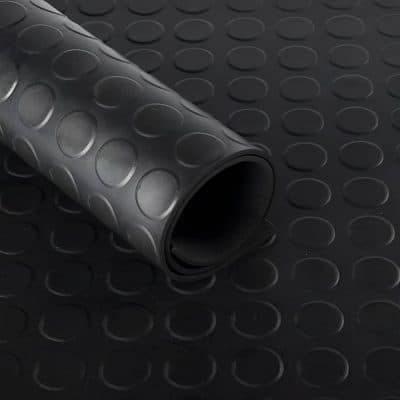
9.How do you determine the appropriate width of a belt conveyor?
We focus on teamwork and communication to achieve common goals, We attach great importance to this detail.
The appropriate width of a conveyor belt is determined by several factors. Firstly, the dimensions of the items being transported need to be considered. The belt should be wide enough to accommodate the size of the items without causing any damage or hindering the flow. Additionally, the speed and capacity of the conveyor system should also be taken into account. A wider belt can increase the speed and capacity of the system, allowing for more efficient and timely transportation of goods. Another important factor is the layout and space available for the conveyor system. The belt should be wide enough to fit within the space and allow for proper installation and operation. Finally, the type of material being conveyed and any special requirements, such as inclines or declines, should also be considered when determining the appropriate width of the conveyor belt.
10.What is a belt conveyor?
Our products & services cover a wide range of areas and meet the needs of different fields.
A conveyor belt is a continuous loop of material that is used to transport objects from one place to another. It is typically made of rubber, plastic, or metal and is powered by a motor that moves the belt along its length. Conveyor belts are commonly used in manufacturing, transportation, and packaging industries to move goods and materials along a production line or from one location to another. They can be found in a variety of settings, from grocery store checkout counters to large-scale industrial facilities.
11.How does a belt conveyor work?
We should have a stable supply chain and logistics capabilities, and provide customers with high -quality, low -priced belt conveyor products.
A conveyor belt is a mechanical device used to transport materials from one location to another. It consists of a continuous loop of material, such as rubber, canvas, or steel, that moves along a series of pulleys or drums. The belt is powered by a motor and can move in either a continuous or intermittent manner, depending on the design of the system. As the belt moves, it carries materials, such as objects, bulk materials, or packages, along the length of the belt to their destination. The speed and direction of the belt can be controlled to ensure efficient and safe transportation of the materials. Conveyor belts are used in a variety of industries, such as manufacturing, mining, and transportation, making it an essential part of modern production processes.
12.Can belt conveyor be used outdoors?
As one of the top belt conveyor manufacturers in China, we take this very seriously.
Yes, conveyor belts can be used outdoors as long as they are designed and constructed to withstand outdoor conditions such as weather, temperature changes, and exposure to sunlight. Outdoor conveyor belts may also require additional features such as waterproofing, UV protection, and corrosion resistance. It is important to consult with the manufacturer or supplier to ensure that the conveyor belt is suitable for outdoor use.
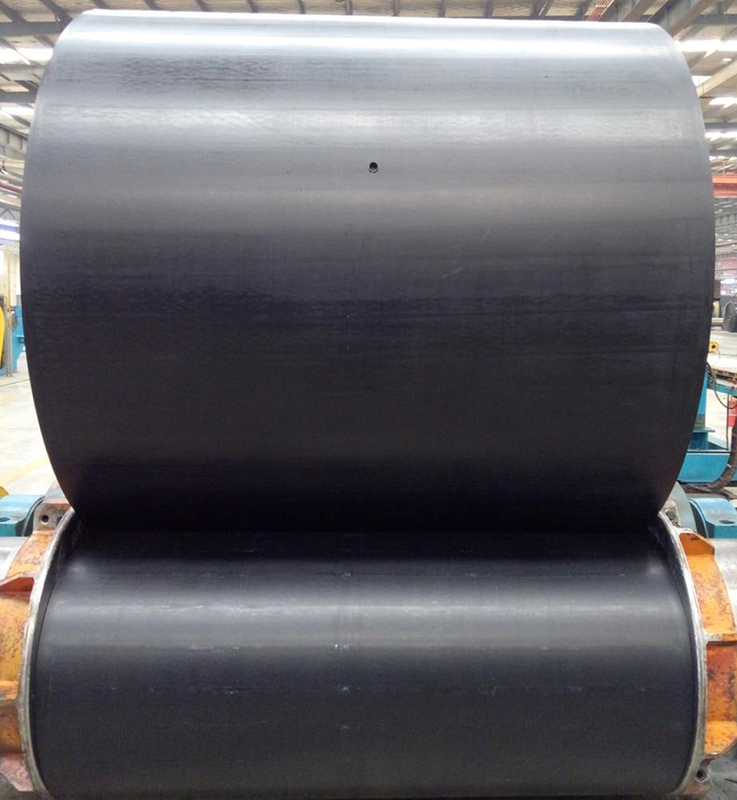
13.Are there different types of belt conveyor cleaners?
We continue to improve belt conveyor products and processes to improve efficiency.
Yes, there are various types of conveyor belt cleaners available on the market. These include brush cleaners, scraper cleaners, blade cleaners, and air knife cleaners. Each type has its unique design and function to effectively remove debris and buildup from the conveyor belt. Some cleaners are designed for general-purpose cleaning, while others are specifically designed for certain industries, such as food processing or mining. The type of cleaner needed will depend on the type of material being transported, the size and speed of the conveyor belt, and the specific cleaning requirements of the facility. It is important to select the right type of cleaner for optimal performance and to ensure the proper maintenance and longevity of the conveyor belt.
14.What are the different types of belt conveyor?
We adhere to the principle of quality first and have a complete production quality management system and quality inspection process.
There are several types of conveyor belts that are designed for different purposes. The most common types include flat belt conveyors, roller conveyors, modular belt conveyors, and cleated belt conveyors. Flat belt conveyors are used for general transportation of items and materials, while roller conveyors use rollers to move goods along a path. Modular belt conveyors feature interlocking plastic segments for increased versatility, and cleated belt conveyors have raised sections or cleats to keep items from sliding off the belt. Other types of conveyor belts include magnetic belt conveyors, spiral conveyors, and gravity conveyors. The type of conveyor belt used depends on the specific needs and requirements of the application, such as the weight and size of the items being transported and the environment in which the conveyor will be used.
15.What is the role of software in optimizing belt conveyor systems?
Software plays a critical role in optimizing conveyor belt systems. It is used to control and monitor the movement of materials, ensuring smooth and efficient operation. With the help of software, different parameters such as speed, direction, and temperature can be adjusted to achieve the most optimal transportation process. In addition, software can analyze data, identify potential issues, and provide real-time feedback, allowing for preventive maintenance and reducing downtime. It also enables remote monitoring and management of conveyor belt systems, increasing productivity and reducing human errors. Therefore, software not only improves the performance and reliability of conveyor belt systems but also contributes to cost-effectiveness and overall operational efficiency.
Tag:acura mdx timing belt or chain,05 acura tl timing belt,24 inch v belt,v belt sheave,cogged v belts,a68 v belt
| Applicable Industries | Hotels, Garment Shops, Building Material Shops, Machinery Repair Shops, Manufacturing Plant, Food & Beverage Factory, Farms, Restaurant, Home Use, Retail, Food Shop, Printing Shops, Construction works , Energy & Mining, Food & Beverage Shops, Other, Advertising Company |
| Power | Optional |
| Warranty | 1 Year |
| Width or Diameter | Size customization |
| Showroom Location | Canada, United States, Italy, Pakistan, India, Mexico, Thailand, Argentina, Colombia, Malaysia |
| Condition | New |
| Structure | Conveyor belt |
| Place of Origin | shenzhen.China |
| Machinery Test Report | Provided |
| Video outgoing-inspection | Provided |
| Marketing Type | New product 2024 |
| Warranty of core components | 1 Year |
| Core Components | Pin, Locker, Belt |
| Weight (KG) | 1 kg |
| Material | Plastic |
| Material Feature | Stable |
| Brand Name | CSTRANS |
| Voltage | 110V 220V 240V |
| Dimension(L*W*H) | Size customization |
| Material | PP.PE.PA,POM |
| Structure | Belt conveyor |
| Brand Name: | UniBelt |
| Pitch | customized |
| color | white. gray. nature. |
| Temperature | POM:-34℃ to 87℃ PP:+1℃ to 94℃ |
| Packaging Details | Packaging Details:Carton or wooden |
| Supply Ability | 2108 Meter/Meters per Month |
| Quantity (meters) | > 744 |
| Lead time (days) | 12 |



1.Can belt conveyor be used for transportation in warehouses?
Yes, conveyor belts are commonly used for transportation in warehouses. They are efficient and cost-effective for moving goods and materials from one location to another within a warehouse. Conveyor belts can be customized to fit the specific needs of a warehouse, such as size, speed, and type of material being transported. They can also be integrated with other warehouse equipment, such as forklifts and automated storage and retrieval systems, to create a seamless and efficient workflow.
2.How are products loaded and unloaded on a belt conveyor?
We are a new belt conveyor manufacturer.
Products are typically loaded onto a conveyor belt using one of the following methods:
Conveyor belts are widely used in various industries to efficiently transport products from one location to another. The loading and unloading process on a conveyor belt typically involves a few steps. Firstly, products are placed onto the conveyor belt by a worker or through an automated system. The belt then moves the products along its path, usually with the help of rollers or a pulley system. As the products reach their destination, they are either manually or automatically removed from the conveyor belt. This can be done by a worker who takes the products off the belt, or by using specialized equipment such as robotic arms. In some cases, the conveyor belt may also have a mechanism to flip or rotate the products to ensure they are in the correct orientation for the next step in the production or distribution process. Once unloaded, the conveyor belt continues to move, ready to receive the next batch of products for loading. This efficient and streamlined process allows for a continuous flow of products, increasing productivity and reducing labor costs.
3.What safety precautions should be followed while working with belt conveyor?
belt conveyor is not a product only, but also can help you comes to money-making.
When working with conveyor belts, it is important to follow certain safety precautions to ensure the safety of yourself and those around you. First and foremost, always wear the proper personal protective equipment, such as gloves and safety glasses, to protect against potential hazards. It is also important to regularly inspect the conveyor belt for any signs of wear and tear, and address any issues immediately. When operating the conveyor belt, make sure to follow proper lockout/tagout procedures to prevent accidental start up. When loading or unloading materials onto the conveyor belt, be aware of your surroundings and stand clear from any moving parts. Additionally, be cautious of any potential pinch points and keep hands and clothing clear from them. Lastly, always be familiar with the emergency shut-off procedures and have an emergency plan in place in case of any accidents. By following these safety precautions, you can ensure a safe working environment when working with conveyor belts.
4.What are some important factors to consider when choosing a belt conveyor supplier?
When choosing a conveyor belt supplier, there are several important factors that should be considered. Firstly, the quality and durability of the conveyor belt should be top priorities. This includes the material used, its weight capacity, and its resistance to wear and tear. Secondly, the supplier's reputation and experience in the industry should be evaluated. A reliable supplier with a good track record will ensure efficient and timely delivery of products. Thirdly, the cost and availability of spare parts and maintenance services should also be taken into account. Additionally, the supplier's level of customer service and support should be assessed to ensure a smooth and satisfactory purchasing experience. Finally, the supplier's compliance with international standards and regulations should also be considered to ensure the safety and reliability of the conveyor belt. Ultimately, a thorough evaluation and consideration of these factors will lead to choosing a reputable and reliable conveyor belt supplier.

5.What are some potential hazards associated with working with belt conveyor?
Our belt conveyor products undergo strict quality control to ensure customer satisfaction.
Working with conveyor belts can pose potential hazards for employees if proper safety measures are not followed. Employees who are not properly trained on how to operate or use the equipment can face serious injuries. Some common hazards associated with conveyor belts include pinch points, entanglement, and falling objects. Pinch points can occur when an employee's body or clothing gets caught between the moving parts of the conveyor belt, which can lead to amputations or severe injuries. Entanglement can also occur if long hair, jewelry, or loose clothing get caught in the moving parts of the belt, causing serious injuries. Additionally, employees who are working near or under the conveyor belt are at risk of being hit by falling objects from the belt or items being transported. It is crucial for employers to provide proper safety training and enforce safety protocols to prevent these hazards and protect their employees.
6.How do you troubleshoot issues with belt conveyor tracking?
When troubleshooting issues with conveyor belt tracking, there are several steps you should follow. First, visually inspect the belt to check for any visible damage or misalignment. Next, make sure the tracking idlers are properly adjusted and any worn or damaged parts are replaced. Then, check the tension and alignment of the belt to ensure it is centered on the pulleys. Additionally, make sure the conveyor is on a level surface and that there are no obstructions or debris interfering with the tracking. Finally, test the belt by running it at a low speed and making any necessary adjustments until the tracking issue is resolved. Regular maintenance and monitoring can also help prevent future tracking issues.
7.What is the maximum weight that a belt conveyor can support?
We continue to invest in research and development and continue to launch innovative products.
A conveyor belt is a mechanical system used for transporting materials and goods from one place to another. It typically consists of two or more pulleys with a continuous loop of material - the conveyor belt - that rotates around them. Conveyor belts are widely used in various industries such as manufacturing, logistics, and transportation. The maximum weight that a conveyor belt can support varies depending on factors such as belt material, design, and length. However, most conveyor belts are designed to handle a maximum load of several thousand pounds. Heavy-duty conveyor belts can support even higher loads. It is crucial to consider the weight capacity of a conveyor belt when selecting one for a specific application to ensure safe and efficient operation.
8.How are belt conveyors affected by temperature and humidity?
Conveyor belts play a crucial role in transporting materials efficiently in various industries. However, their performance can be greatly affected by temperature and humidity. Changes in temperature can cause the material of the belt to expand or contract, resulting in changes in tension and potentially causing the belt to slip or become misaligned. In high humidity conditions, the moisture can cause the belt to swell or become moldy, leading to degradation and reduced lifespan. On the other hand, low humidity can cause the belt to become brittle and prone to cracking. Therefore, maintaining proper temperature and humidity levels is essential for ensuring the smooth and effective operation of conveyor belts. Regular inspections and adjustments should also be carried out to mitigate the potential impacts of temperature and humidity on the performance of these critical machinery.

9.How do you determine the appropriate width of a belt conveyor?
We focus on teamwork and communication to achieve common goals, We attach great importance to this detail.
The appropriate width of a conveyor belt is determined by several factors. Firstly, the dimensions of the items being transported need to be considered. The belt should be wide enough to accommodate the size of the items without causing any damage or hindering the flow. Additionally, the speed and capacity of the conveyor system should also be taken into account. A wider belt can increase the speed and capacity of the system, allowing for more efficient and timely transportation of goods. Another important factor is the layout and space available for the conveyor system. The belt should be wide enough to fit within the space and allow for proper installation and operation. Finally, the type of material being conveyed and any special requirements, such as inclines or declines, should also be considered when determining the appropriate width of the conveyor belt.
10.What is a belt conveyor?
Our products & services cover a wide range of areas and meet the needs of different fields.
A conveyor belt is a continuous loop of material that is used to transport objects from one place to another. It is typically made of rubber, plastic, or metal and is powered by a motor that moves the belt along its length. Conveyor belts are commonly used in manufacturing, transportation, and packaging industries to move goods and materials along a production line or from one location to another. They can be found in a variety of settings, from grocery store checkout counters to large-scale industrial facilities.
11.How does a belt conveyor work?
We should have a stable supply chain and logistics capabilities, and provide customers with high -quality, low -priced belt conveyor products.
A conveyor belt is a mechanical device used to transport materials from one location to another. It consists of a continuous loop of material, such as rubber, canvas, or steel, that moves along a series of pulleys or drums. The belt is powered by a motor and can move in either a continuous or intermittent manner, depending on the design of the system. As the belt moves, it carries materials, such as objects, bulk materials, or packages, along the length of the belt to their destination. The speed and direction of the belt can be controlled to ensure efficient and safe transportation of the materials. Conveyor belts are used in a variety of industries, such as manufacturing, mining, and transportation, making it an essential part of modern production processes.
12.Can belt conveyor be used outdoors?
As one of the top belt conveyor manufacturers in China, we take this very seriously.
Yes, conveyor belts can be used outdoors as long as they are designed and constructed to withstand outdoor conditions such as weather, temperature changes, and exposure to sunlight. Outdoor conveyor belts may also require additional features such as waterproofing, UV protection, and corrosion resistance. It is important to consult with the manufacturer or supplier to ensure that the conveyor belt is suitable for outdoor use.

13.Are there different types of belt conveyor cleaners?
We continue to improve belt conveyor products and processes to improve efficiency.
Yes, there are various types of conveyor belt cleaners available on the market. These include brush cleaners, scraper cleaners, blade cleaners, and air knife cleaners. Each type has its unique design and function to effectively remove debris and buildup from the conveyor belt. Some cleaners are designed for general-purpose cleaning, while others are specifically designed for certain industries, such as food processing or mining. The type of cleaner needed will depend on the type of material being transported, the size and speed of the conveyor belt, and the specific cleaning requirements of the facility. It is important to select the right type of cleaner for optimal performance and to ensure the proper maintenance and longevity of the conveyor belt.
14.What are the different types of belt conveyor?
We adhere to the principle of quality first and have a complete production quality management system and quality inspection process.
There are several types of conveyor belts that are designed for different purposes. The most common types include flat belt conveyors, roller conveyors, modular belt conveyors, and cleated belt conveyors. Flat belt conveyors are used for general transportation of items and materials, while roller conveyors use rollers to move goods along a path. Modular belt conveyors feature interlocking plastic segments for increased versatility, and cleated belt conveyors have raised sections or cleats to keep items from sliding off the belt. Other types of conveyor belts include magnetic belt conveyors, spiral conveyors, and gravity conveyors. The type of conveyor belt used depends on the specific needs and requirements of the application, such as the weight and size of the items being transported and the environment in which the conveyor will be used.
15.What is the role of software in optimizing belt conveyor systems?
Software plays a critical role in optimizing conveyor belt systems. It is used to control and monitor the movement of materials, ensuring smooth and efficient operation. With the help of software, different parameters such as speed, direction, and temperature can be adjusted to achieve the most optimal transportation process. In addition, software can analyze data, identify potential issues, and provide real-time feedback, allowing for preventive maintenance and reducing downtime. It also enables remote monitoring and management of conveyor belt systems, increasing productivity and reducing human errors. Therefore, software not only improves the performance and reliability of conveyor belt systems but also contributes to cost-effectiveness and overall operational efficiency.
Tag:acura mdx timing belt or chain,05 acura tl timing belt,24 inch v belt,v belt sheave,cogged v belts,a68 v belt

